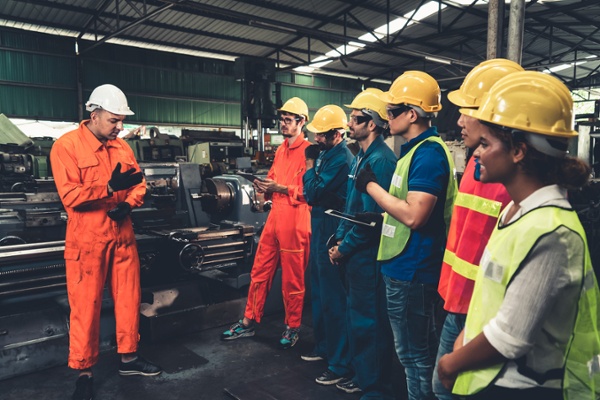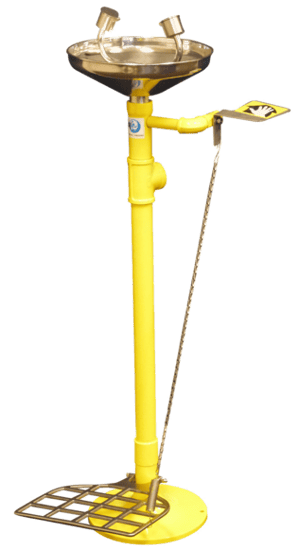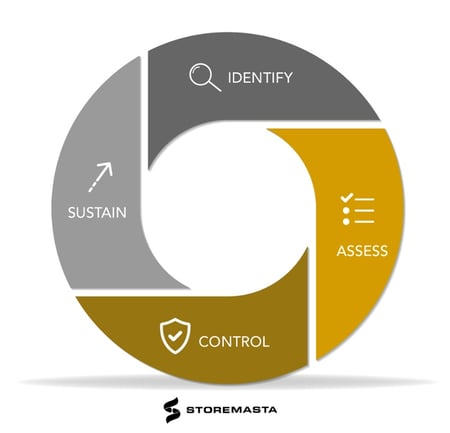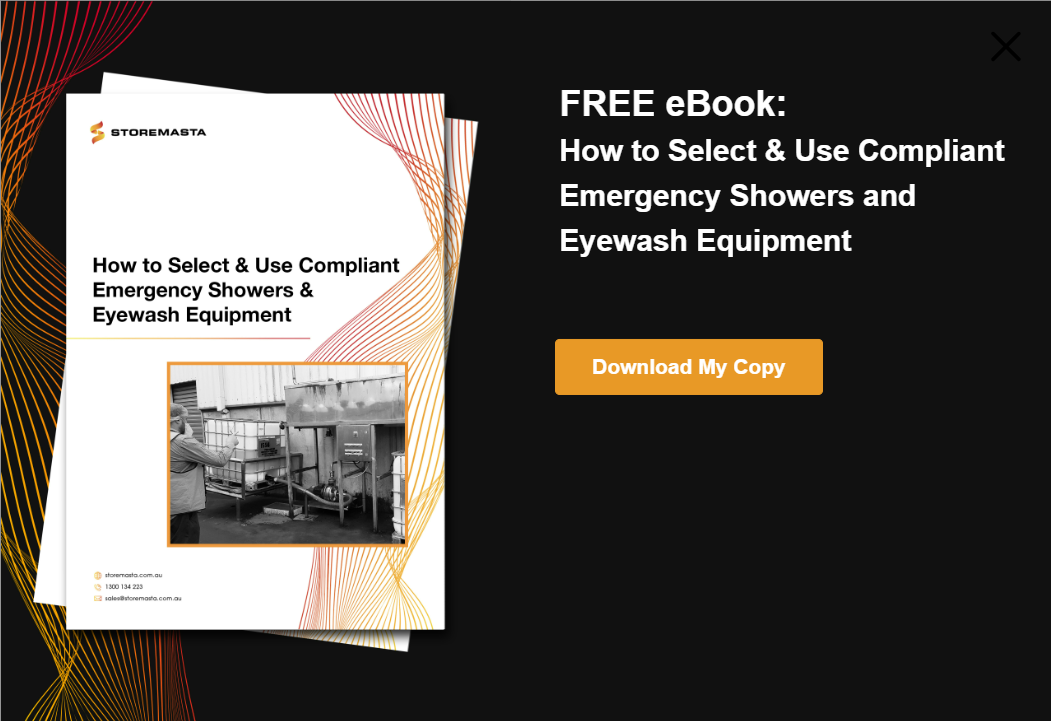So, you’ve purchased a compliant safety shower and eyewash station, it’s installed and ready for use? But how can you ensure that your emergency decontamination facilities are effective when your staff go to use them? While the installation of your emergency decontamination facilities is an important step in maintaining compliance, how this equipment is being used, cleaned and maintained can affect the safety of your team.
In this post, we detail the 5 essential practices to make sure your safety showers and eyewash stations remain a compliant and effective safety measure:
- Maintenance and integrity testing
- Inspections and safety audits
- Training and competency checks
- Supervision and accountability
- Up-to-date hazards information
1. Maintenance and Integrity Testing of Safety Equipment
Workplaces can be tough environments — especially when they carry hazardous chemicals. New hazards can emerge as quickly as things fall into disrepair, and outdoor stations can deteriorate very quickly if they are constantly exposed to extremes in heat, cold, wind, rain, dust, hail as well as impact from flying objects.
One of the most important parts of having emergency equipment in place, is to schedule regular inspections, integrity testing and maintenance to repair or replace any items that are missing, worn, or damaged.
“Maintenance procedures should include mechanisms for workers to report defective safety equipment as soon as identified so that prompt remedial action can be taken.”
Safe Work Australia
Maintenance requirements of AS 4775 - Emergency eyewash and shower equipment
AS 4775 specifies a range of requirements for decontamination showers and emergency eyewash stations. These requirements include guidance on the selection of decontamination shower and eyewash equipment selection and construction, as well as its location, usage and maintenance.
Plumbed and self-contained decontamination showers must be located in accessible positions, no more than 10 seconds from the potential hazard. Emergency showers must be protected from extreme temperatures, so the flushing fluid remains at a tepid operating temperature. Signage is required for decontamination showers, with suitable illumination for the safety of the area. The flow must be at least 75.7 litres per minute.
Decontamination eyewash stations must be able to be operated without the use of the operator’s hands. Flushing fluid must flow at a rate no less than 1.5 litres per minute, for a minimum of 15 minutes. The emergency eyewash facilities must be able to flush both eyes simultaneously.
In Australia all emergency showers, eyewash stations, drench hoses and personal wash units have maintenance requirements according to Australian Standards. The below table outlines these maintenance and integrity testing duties.
Activation, Inspection, Testing & Tagging of Decontamination Showers and Eyewash Stations
| Monitored to determine if flushing fluid needs to be changed or supplemented. | Weekly activation and inspection | Annual inspection, testing and tagging by qualified technician |
|---|---|---|
|
|
|
IMPORTANT: Your weekly activation test should consider water quality and water pressure but also check that the mandatory placards are in place and the area is free of obstacles.
2. Inspections and Safety Audits
Support your weekly maintenance and integrity testing with regular inspections and safety audits, remembering that workplace inspections often become so routine they are reduced to mere ‘tick and flick’ exercises. A safety audit conducted by an objective party — like workers from another department or external auditors — can be an effective way of objectively reviewing the compliance and effectiveness of your emergency equipment.
Inspections uncover things like:
- Equipment being misused (eg, washing hands and other objects in the eyewash basin).
- Changes to the work environment which reduce the effectiveness of the unit (eg, increase in the number of workers in the area supported by a safety shower)
- New hazards introduced since the equipment was installed (eg, lab workers no longer purchasing pre-mixed chemicals but mixing everything themselves).
REMEMBER: External teams often notice hazards and concerns that are overlooked (or ignored) by workers and supervisors who are either immersed in their own working environment (or don’t want to get into trouble.)
3. Training and Competency Checks
Your safety showers, eyewash stations, drench hoses and personal wash units will quickly fall into disrepair if staff are not trained to use them correctly. Like all safety measures, the effectiveness of your decontamination equipment will depend on the competencies of both workers and supervisors. Because once trained, workers must also be properly supervised.
Decontamination shower and eyewash training should focus on:
- Nature of the hazardous materials they use and handle.
- How to handle chemicals and perform work operations
- Actions to take in an emergency (eg, fire, explosion, chemical spill).
- Selecting and using the correct equipment during an emergency (eg, acid in the eyes, eyewash unit for 30 minutes).
- Housekeeping procedures to care for the emergency decontamination station in their work zone.
- Responsibilities under the WHS Act to follow procedures and use equipment properly.
- Prohibited activities and how misusing equipment can directly impact their own wellbeing.
REMEMBER: Effective decontamination shower and eyewash training requires regular revision and opportunities to practice. Schedule remedial sessions as well as simulated emergency drill training.
4. Supervision and Accountability
It’s a requirement of the WHS Act that workers take responsibility for their own wellbeing, health and safety while at work. This includes following procedures and taking care of safety equipment. At the same time the Act requires that workers are properly trained and supervised.
We recommend building accountabilities into job descriptions. This will empower your people to take action when:
- Safety equipment is being misused
- Emergency decontamination procedures aren’t being followed
- Decontamination showers or eyewash facilities have become damaged

Empowering staff to take accountability for the equipment and their safety can assist with safety and compliance onsite.
For example:
- Workers are accountable if they are found washing lab glassware with a drench hose in the decontamination station.
- Supervisors are accountable if work areas are left in a mess with obstructions in front of safety showers.
- Managers are accountable if new hazards arise in a work area and the emergency decontamination equipment is no longer effective or compliant.
5. Up-to-date Hazards Information
Safety equipment should address the specific hazards in a work area. Therefore, our last essential practice is to ensure that you are regularly reviewing those hazards.
This includes:
- Checking for new information about chemical hazards from safety data sheets.
- Monitor industry developments for emerging technologies that enable safer work methods and more efficient equipment.
- Use Storemasta’s 4-step risk management methodology, work through the steps of identify, assess, control and sustain to ensure hazards are regularly monitored.
IMPORTANT: Find out more about the Storemasta 4-step methodology by reading our popular blog post, How to Control Chemical Hazards in the Workplace.
Meeting Your Decontamination Shower & Eyewash Requirements
Using regular showers for emergency decontamination is obviously a non-compliant practice. But making sure that no harmful fluids or contaminants enter the eyes of workers – or that the flushing fluid is tepid and flowing at the desired rate – are also considerations that are necessary to you’re your decontamination shower requirements.
To learn more about making sure your decontamination shower and eyewash facilities are compliant and effective, why not access your free eBook? How to select and use compliant emergency showers and eyewash equipment will guide you through all the requirements of the Australian Standards, so you can ensure safety for your workers in your operations.
Joining the team as a Dangerous Goods Storage Consultant, Melissa Hampton became Storemasta's Marketing Manager in late 2021. With extensive knowledge and experience in chemical compliance, Melissa is responsible for leading the Marketing team and helping shape their marketing strategy. In her spare time, you can find Melissa hiking, swimming and enjoying the great outdoors in beautiful north-west Tasmania.


